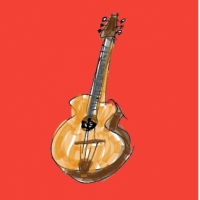DjangoBooks.com
Welcome to our Community!
Categories
- 20K All Categories
- 1.1K General
- 476 Welcome
- 59 Archtop Eddy's Corner
- 146 CD, DVD, and Concert Reviews
- 384 FAQ
- 26 Gypsy Jazz Italia
- 26 Photos
- 202 Gypsy Picking
- 21 Unaccompanied Django
- 15 Pearl Django Play-Along Vol.1
- 17 Gypsy Fire
- 45 Gypsy Rhythm
- 1.4K Gypsy Jazz University - Get Educated
- 130 Gypsy Jazz 101
- 224 Repertoire
- 218 History
- 707 Technique
- 51 Licks and Patterns
- 6 Daniel Givone Manouche Guitare Method Users Group
- 20 Eddie Lang Club
- 1.3K Gypsy Jazz Gear
- 801 Guitars, Strings, Picks, Amps, Pickups and Other Accessories
- 457 Classifieds
- 49 Recording
- 62 Other Instruments
- 18 Violin
- 5 Mandolin
- 22 Accordion
- 7 Bass
- 10 Woodwinds
- 347 Gypsy Jazz Events
- 143 North America
- 109 Europe
- 95 International
In this Discussion
Who's Online (0)
What do you think of this tailpiece ?
 crookedpinky
Glasgow✭✭✭✭ Alex Bishop D Hole, Altamira M & JWC D hole
crookedpinky
Glasgow✭✭✭✭ Alex Bishop D Hole, Altamira M & JWC D hole
OK dokey, here's a question for my gypsy jazz guitar playing and guitar building chums. Ger Boonstra, a dutch builder of guitars, reckons that his own design for an Art Deco style tailpiece for gypy guitars will in his own words
"increase tone and brilliance while reducing string tension. Angled compensation and staggered peg height for the best possible sound and playability."
What are your thoughts about this ? Will it work and if so how ?
"increase tone and brilliance while reducing string tension. Angled compensation and staggered peg height for the best possible sound and playability."
What are your thoughts about this ? Will it work and if so how ?
always learning











Comments
How it could change the things he says it does, that I can't see.
So overall, this tailpiece may tip the balance in sound/ volume towards the E, A, & D strings, while decreasing the bend-ability of the G, B, E strings slightly. Just my opinion.
Incidentally the higher the break angle the greater the forward torque is on the bridge
I've made similar tailpieces out of solid brass like that for archtops.